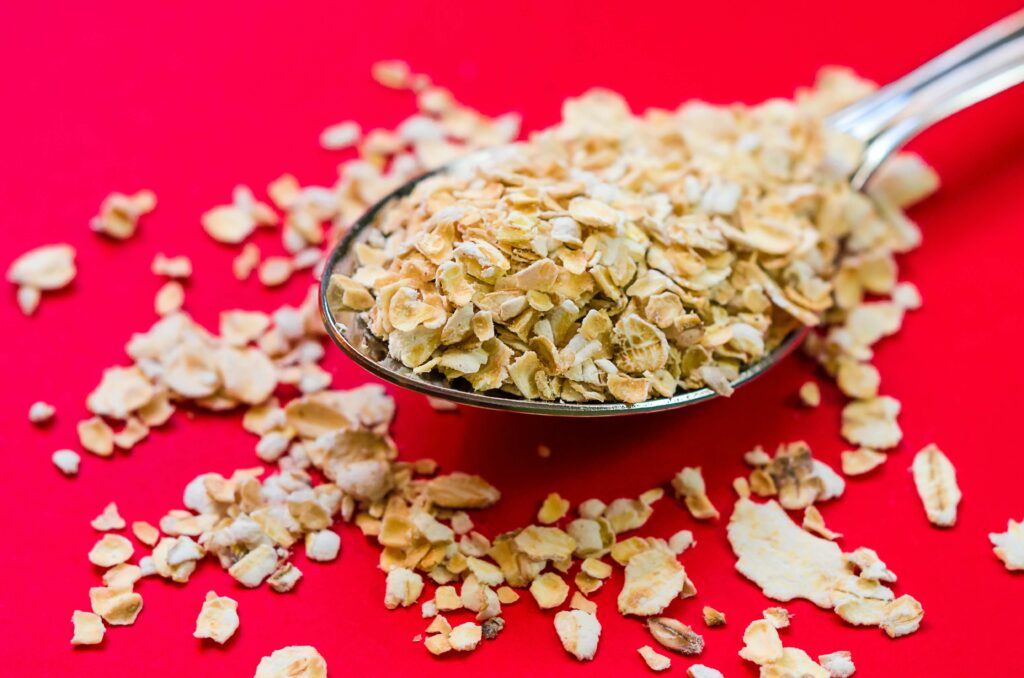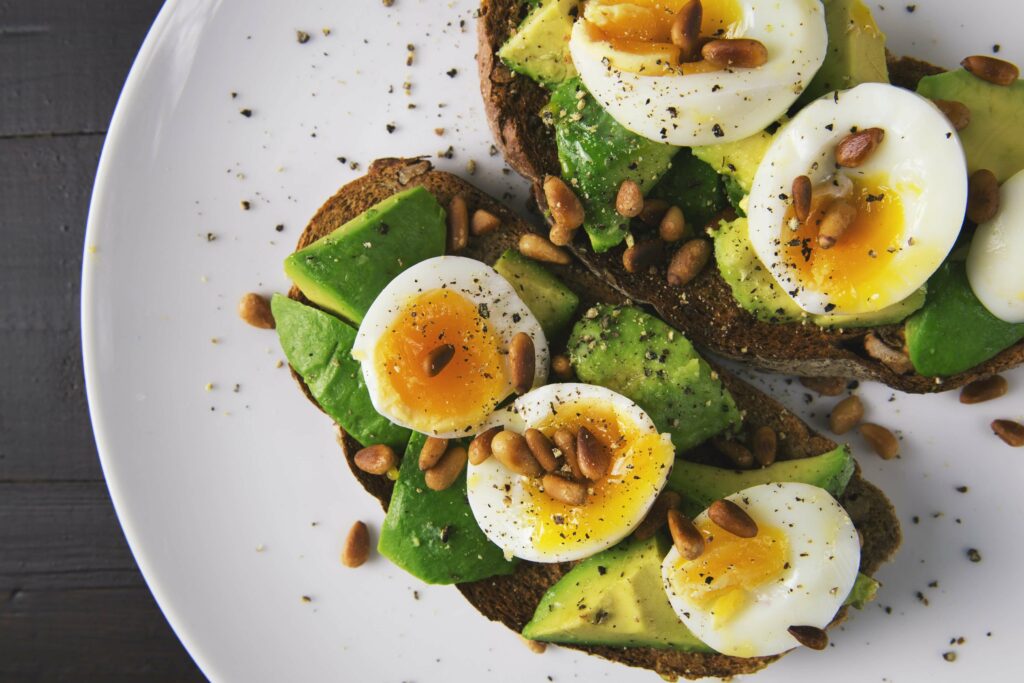Table of Contents
Introduction
In a world marked by hustle and bustle, maintaining a nutrient-rich diet might seem like a daunting task. However, the journey toward better health and vitality begins with the choices we make every day. This article aims to provide you with actionable strategies to effortlessly integrate nutrient-rich foods into your daily routine. By understanding the significance of these foods and adopting mindful practices, you can transform your eating habits and nourish your body and mind.
Understanding Nutrient-Rich Foods (diet)


Defining Nutrient-Rich Foods and Their Significance
Nutrient-rich foods are those that pack a powerful punch of vitamins, minerals, antioxidants, and essential nutrients in every bite. They contribute to overall well-being by promoting optimal bodily functions, improving energy levels, and supporting mental clarity. Incorporating these foods into your diet can pave the way for enhanced cognitive function, reduced risk of chronic diseases, and a more balanced mood.
Exploring the Diverse Range of Nutrients
Vitamins, minerals, and other nutrients are essential for a well-functioning body. For example, vitamin C found in citrus fruits supports the immune system, while iron from leafy greens is vital for oxygen transport in the body. Antioxidants in berries combat oxidative stress, contributing to skin health and reducing inflammation. These nutrients work synergistically to support your body’s overall health and well-being.
Planning and Preparation


Embracing Meal Planning as a Foundation
Meal planning is a cornerstone of successful dietary change. It empowers you to make deliberate and mindful food choices. By allocating time to plan your meals, you can ensure that each dish is balanced, incorporating a variety of nutrient-rich foods. Consider creating a weekly meal plan that includes breakfast, lunch, dinner, and snacks, keeping your nutritional goals in mind.
Creating Balanced and Diverse Meal Options
Varying your meals not only prevents monotony but also ensures that you receive a spectrum of nutrients. Incorporate different colors of fruits and vegetables to provide a range of vitamins and minerals. Balance lean proteins, whole grains, and healthy fats to create satisfying and nutritionally dense meals.
Mindful Eating Practices
Cultivating Mindfulness for the Eating Experience
Mindful eating encourages you to savor the flavors, textures, and aromas of your food. It involves being fully present during meals, allowing you to appreciate each bite and recognize hunger and fullness cues more effectively. This practice promotes better digestion, reduced overeating, and a heightened connection to the nourishment your food provides.
Cultivating mindfulness for the eating experience involves a deliberate shift in how we approach and engage with our meals. In a fast-paced world, we often find ourselves rushing through meals, multitasking, or eating on-the-go without truly savoring the flavors and appreciating the nourishment our food provides. Mindful eating encourages us to slow down, become fully present, and engage all our senses in the act of eating. It’s about creating a deeper connection with our food, our body, and the entire process of nourishment.
Key Aspects of Cultivating Mindful Eating:
- Presence and Awareness: Mindful eating starts with being fully present at the table. It means dedicating time to focus solely on the meal at hand, letting go of distractions like screens, work, or worries. By paying attention to each bite, we can better understand our body’s responses and preferences.
- Engaging the Senses: The experience of eating is rich with sensory details. Mindful eating invites us to engage all our senses – sight, smell, touch, taste, and even sound. Observing the colors, textures, and aromas of our food can enhance the overall enjoyment of the meal.
- Savoring Each Bite: Instead of rushing through the meal, mindful eating encourages us to savor each bite. Chew slowly and deliberately, taking the time to appreciate the complex flavors and textures. This not only enhances the taste experience but also allows our body to signal when it’s satisfied.
- Listening to Hunger and Fullness Cues: Mindful eating promotes a heightened awareness of our body’s hunger and fullness cues. By tuning into these signals, we can avoid overeating and give our body what it truly needs. This helps us establish a healthier and more intuitive relationship with food.
- Reduced Overeating: Mindful eating discourages mindless overeating, a common behavior that can lead to discomfort and unhealthy eating habits. Being present while eating enables us to recognize when we’ve had enough and when to stop.
- Better Digestion: Eating mindfully has been associated with improved digestion. Chewing food thoroughly aids in the breakdown of nutrients and makes it easier for the digestive system to process the meal.
- Emotional Well-being: Mindful eating also extends to recognizing emotional triggers that may lead to unhealthy eating patterns. By becoming attuned to our emotions and how they influence our eating choices, we can make more conscious decisions about what we eat and why.
Incorporating mindfulness into our eating habits doesn’t require a drastic overhaul. It’s a gradual process that can be practiced in small steps. Whether it’s taking a few deep breaths before a meal, setting aside designated meal times, or consciously enjoying each bite, these efforts can contribute to a more nourishing and satisfying eating experience.
Ultimately, cultivating mindfulness for the eating experience encourages us to honor the food we consume, develop a healthier relationship with our bodies, and enhance our overall well-being. It’s a practice that not only benefits our physical health but also fosters a greater sense of gratitude and awareness in our daily lives.
Practicing Intuitive Eating

Intuitive eating involves listening to your body’s signals and eating in response to physical hunger rather than emotional triggers. By focusing on internal cues, you can build a healthier relationship with food and make choices that align with your nutritional needs.
Practicing intuitive eating is a holistic approach to nourishing your body that places emphasis on listening to your body’s cues and responding to its natural signals of hunger, fullness, and satisfaction. Unlike rigid diets or external rules, intuitive eating promotes a balanced and sustainable relationship with food that aligns with your individual needs, preferences, and overall well-being.
Key Principles of Intuitive Eating:
- Tuning into Physical Hunger: Intuitive eating starts with recognizing and honoring physical hunger cues. Instead of eating based on external cues like time of day or social pressures, you focus on the signals your body sends when it needs nourishment.
- Honoring Fullness: Just as you listen to hunger cues, intuitive eating encourages you to pay attention to feelings of fullness and satisfaction. This means stopping eating when you’re comfortably full, even if there’s still food on your plate.
- Rejecting Diet Mentality: Intuitive eating rejects the idea of strict diets, calorie counting, or food restriction. It encourages you to let go of the mindset that categorizes foods as “good” or “bad.” Instead, all foods are neutral, and you’re free to choose what you truly desire.
- Embracing Food Enjoyment: Intuitive eating is about finding pleasure in food and eating experiences. It encourages you to explore a variety of foods, flavors, and textures without guilt, and to savor each bite.
- Listening to Cravings: Cravings are your body’s way of signaling specific nutritional needs. Intuitive eating encourages you to pay attention to your cravings and respond to them in a balanced manner. If you’re craving something sweet, for example, you can opt for a piece of fruit or a small dessert.
- Respecting Emotional Eating: Emotions often influence our eating habits. Intuitive eating acknowledges emotional eating and encourages you to be compassionate with yourself. Instead of using food as a sole coping mechanism, you learn to recognize emotions and seek healthier ways to address them.
- Body Respect: Intuitive eating promotes body acceptance and respect. It encourages you to embrace your body’s natural shape and size and reject the pursuit of an unrealistic ideal. The focus shifts from changing your body to nurturing it.
- Physical Activity: Exercise is an essential part of self-care. Intuitive eating emphasizes engaging in physical activities that bring joy and enhance overall well-being, rather than solely as a means to burn calories.
- Gentle Nutrition: While intuitive eating encourages you to honor your body’s cues, it also recognizes the importance of nourishment. This involves making food choices that prioritize balanced nutrition and support your well-being.

Benefits of Practicing Intuitive Eating:
- Improved Relationship with Food: Intuitive eating helps you break free from the cycle of restrictive eating and guilt associated with certain foods. This promotes a healthier and more positive relationship with food.
- Enhanced Body Image: By focusing on self-acceptance and rejecting unrealistic body ideals, intuitive eating supports a healthier body image and higher self-esteem.
- Reduced Binge Eating: Intuitive eating reduces the likelihood of binge eating episodes by promoting balanced eating patterns and reducing the sense of deprivation.
- Sustainable Lifestyle: Unlike restrictive diets, intuitive eating is a sustainable approach to eating that can be maintained long-term. It adapts to your changing nutritional needs and life circumstances.
- Improved Digestion: Eating in response to hunger cues and stopping when satisfied can lead to improved digestion and reduced digestive discomfort.
Practicing intuitive eating takes time and patience, especially if you’re accustomed to strict dieting. It involves reconnecting with your body’s wisdom, learning to trust yourself, and letting go of external food rules. While it might require some adjustments, intuitive eating offers the freedom to enjoy food and nourish your body in a way that feels genuinely satisfying and sustainable. It’s about finding balance, nurturing your well-being, and creating a positive, empowered relationship with the food you eat.
Incorporating Whole Foods



Choosing Whole Grains over Refined Carbohydrates
When it comes to making dietary choices that support your overall health and well-being, the type of carbohydrates you consume plays a crucial role. Whole grains and refined carbohydrates represent two distinct categories of carbohydrates, each with different effects on your body. Opting for whole grains over refined carbohydrates can have a positive impact on your energy levels, blood sugar regulation, and long-term health.
Understanding Whole Grains:
Whole grains are grains that retain their entire structure, including the bran, germ, and endosperm. This means they contain all the nutrients and fiber naturally present in the grain. Examples of whole grains include quinoa, brown rice, whole wheat, oats, barley, and millet.
Distinguishing Refined Carbohydrates:
Refined carbohydrates, on the other hand, undergo processing that removes the outer bran and germ layers, leaving only the starchy endosperm. This process removes essential nutrients, including fiber, vitamins, and minerals. Common sources of refined carbohydrates include white rice, white bread, pasta made from refined flour, sugary cereals, and pastries.
Benefits of Choosing Whole Grains:
- High in Fiber: Whole grains are rich in dietary fiber, which offers several benefits. Fiber aids in digestion by promoting regular bowel movements and preventing constipation. It also helps you feel fuller for longer, reducing the likelihood of overeating and promoting weight management.
- Steady Energy Release: The fiber in whole grains slows down the digestion and absorption of carbohydrates, leading to a slower and steadier release of glucose into the bloodstream. This helps maintain stable blood sugar levels, preventing sudden spikes and crashes in energy.
- Nutrient Density: Whole grains are packed with essential nutrients such as B vitamins (thiamin, riboflavin, niacin, and folate), minerals (iron, magnesium, and zinc), and antioxidants. These nutrients support various bodily functions, including metabolism, energy production, and immune health.
- Heart Health: The fiber, antioxidants, and healthy fats found in whole grains contribute to heart health. Fiber helps lower cholesterol levels, reducing the risk of heart disease, while antioxidants and healthy fats support overall cardiovascular well-being.
- Weight Management: The combination of fiber, nutrients, and slower digestion can contribute to a feeling of fullness and satisfaction. This can help control appetite and make it easier to maintain a healthy weight.
Avoiding Refined Carbohydrates:
Refined carbohydrates, stripped of their fiber and nutrients, are rapidly digested and can lead to quick spikes in blood sugar levels. These spikes are often followed by crashes in energy, leading to feelings of tiredness and cravings for more food. Relying on refined carbohydrates can contribute to weight gain, metabolic issues, and an increased risk of type 2 diabetes.
Incorporating Whole Grains:
To incorporate more whole grains into your diet, consider the following tips:
- Choose whole grain versions of bread, pasta, rice, and cereal.
- Experiment with different types of whole grains, such as quinoa, barley, farro, and bulgur.
- Use whole wheat flour in your baking and cooking.
- Enjoy oatmeal or whole grain cereal for breakfast.
- Opt for brown rice or whole wheat pasta when preparing meals.
By making these simple swaps, you can enhance the nutritional quality of your meals, promote steady energy levels, and support your long-term health goals. Remember that small changes over time can have a significant positive impact on your overall well-being.
Increasing Consumption of Fresh Fruits and Vegetables
Fruits and vegetables are packed with vitamins, minerals, and antioxidants. They contribute to a well-rounded diet while supporting immune function, reducing inflammation, and promoting skin health.
Opting for Lean Proteins and Healthy Fats


Lean proteins, such as poultry, fish, and legumes, provide amino acids necessary for tissue repair and neurotransmitter production. Healthy fats, found in avocados, nuts, and olive oil, support brain health and satiety.
Stay tuned for Part II of this article, where we’ll delve into the importance of hydration, smart snacking strategies, and how to eat for sustained energy and mental clarity.
Useful Refences
- Parletta N, et al. A Mediterranean-style dietary intervention supplemented with fish oil improves diet quality and mental health in people with depression: A randomized controlled trial (HELFIMED). Nutr Neurosci. 2019;22(7):474-487.
- Gómez-Pinilla F. Brain foods: the effects of nutrients on brain function. Nat Rev Neurosci. 2008;9(7):568-578.
FAQs
1. What is a nutrient-rich diet, and why is it important for overall health?
A nutrient-rich diet is one that includes foods packed with vitamins, minerals, antioxidants, and essential nutrients. This type of diet supports optimal bodily functions, boosts energy levels, and enhances mental clarity. It’s important for maintaining overall well-being and reducing the risk of chronic diseases.
2. How can I seamlessly incorporate nutrient-rich foods into my daily routine?
You can integrate nutrient-rich foods by practicing mindful eating, meal planning, and incorporating a diverse range of whole foods like fruits, vegetables, lean proteins, and healthy fats. These strategies will help you make balanced and nourishing food choices effortlessly.
3. What are some examples of nutrient-rich foods and their benefits?
Nutrient-rich foods include a variety of fruits, vegetables, whole grains, lean proteins, and healthy fats. For instance, citrus fruits provide vitamin C for immune support, leafy greens offer iron for oxygen transport, and berries contain antioxidants for skin health and inflammation reduction.
4. How does mindful eating contribute to better digestion and healthier eating habits?
Mindful eating involves being fully present during meals, allowing you to savor flavors and recognize hunger and fullness cues. This practice enhances digestion, prevents overeating, and helps you build a more connected and conscious relationship with food.
5. What is intuitive eating, and how does it promote a healthier relationship with food?
Intuitive eating involves listening to your body’s cues and eating based on physical hunger rather than emotional triggers. By focusing on internal signals, you can develop a more balanced approach to eating that aligns with your nutritional needs.
6. How can meal planning help me adopt a nutrient-rich diet?
Meal planning empowers you to make intentional food choices. By dedicating time to plan meals, you can ensure they are well-balanced and incorporate a variety of nutrient-rich foods. This practice supports your nutritional goals and prevents impulsive eating decisions.
7. Why should I choose whole grains over refined carbohydrates in my diet?
Whole grains like quinoa, brown rice, and whole wheat are rich in fiber and essential nutrients. They provide sustained energy, regulate blood sugar levels, and prevent energy crashes and mood swings often associated with refined carbohydrates.
8. How do fresh fruits and vegetables contribute to a well-rounded diet?
Fresh fruits and vegetables are packed with vitamins, minerals, and antioxidants. They support immune function, reduce inflammation, and promote skin health, making them essential components of a balanced diet.
9. What are some tips for incorporating lean proteins and healthy fats into my meals?
Lean proteins such as poultry, fish, and legumes provide amino acids for tissue repair and neurotransmitter production. Healthy fats found in avocados, nuts, and olive oil support brain health and help you feel satiated.
10. What can I expect in Part II of the article “Nourishing Your Life: How to Seamlessly Incorporate a Nutrient-Rich Diet into Your Daily Routine”?
Part II of the article will delve into topics like the importance of hydration, smart snacking strategies, and how to eat for sustained energy and mental clarity. It will provide additional insights and practical tips for enhancing your nutritional journey.


